70 YEARS OF COLLECTIVE DEFENCE
lunes 3 de junio de 2019
Número: 82
The North Atlantic Treaty Organisation (NATO) has just celebrated 70 years since the signing of its founding treaty. At that time there were 12 members who agreed to mutually defend each other in case of armed agression against any one of the members. As time passed, more countries adopted this principal and joined the organisation, with Spain joining in 1982. In its 70 years of existence, NATO's composition, structure, strategic approach and even, on a number of occasions, its headquarters have changed, but it has always remained committed to the cornerstone of its ideology: the principle of collective defence.
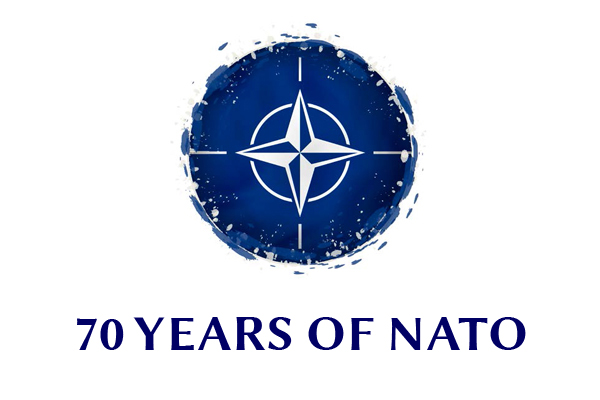
What is NATO?
NATO is an intergovernmental alliance created to guarantee the freedom and security of its member countries through political and military means. The Treaty of Washington, signed on the 4th of April 1949, is its foundational treaty. In Article 5, it establishes that an attack against one of the allies will be considered an attack against all allies.
Article 5
The members agree that an armed attack against one or against a number of the allies, whether in Europe or in North America, will be considered an attack against all of them. Accordingly, they agree that if such an attack should happen then each country, acting upon the right to legitimate individual or collective defence which is recognised by Article 51 of the charter of the United Nations, will assist the country or countries which has been attacked, immediately, individually and in agreement with the other members, taking whatever means it deems necessary (including the use of the armed forces) to reestablish and maintain the security of the North Atlantic region.
The Article has only been invoked once, after the attacks on the Twin Towers and the Pentagon on the 11th of September 2001.
New headquarters

The current NATO headquarters was opened on the 25th of May, 2017 in Brussels (Belgium). The building is 32 metres high with a total area of more than 250,000 metres squared. 4,000 people work there every day including those who work as part of national delegations and support staff to NATO national military representatives, people working on NATO member country missions and civil servants.
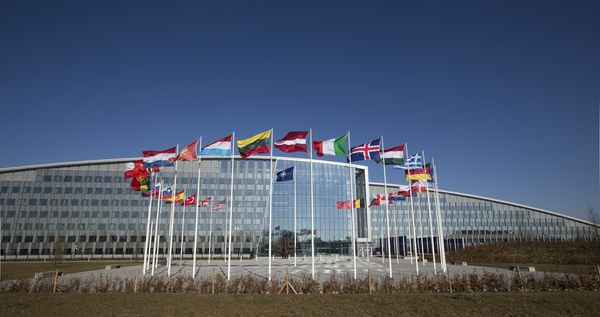
DOUBLE DIMENSION
|
Political |
Military |
|
NATO promotes democratic values and allows members to consult one another and cooperate on matters regarding defence and security in order to resolve problems, create confidence and, in the long term, avoid conflicts. |
NATO has a committment to the peaceful resolution of disputes. When diplomatic efforts do not yield results, the military force undertakes crisis management operations. These operations are carried out under the collective defence clause of NATO's foundational treaty (Article 5 of the Treaty of Washington) or through a United Nations mandate, by NATO itself or in cooperation with other countries and authorities. |
The Member Countries
|
Belgium (1949) |
Canada (1949) |
Denmark (1949) |
France (1949) |
Iceland (1949) |
|
Italy (1949) |
luxembourg (1949) |
Netherlands (1949) |
Norway (1949) |
Portugal (1949) |
|
United Kingdom (1949) |
United States (1949) |
Greece (1952) |
Turkey (1952) |
Germany (1955) |
|
Spain (1982) |
Czech Republic (1999) |
Hungary (1999) |
Poland (1999) |
Bulgaria (2004) |
|
Estonia (2004) |
Latvia (2004) |
Lithuania (2004) |
Romania (2004) |
Slovakia (2004) |
|
Slovenia (2004) |
Albania (2009) |
Croatia (2009) |
Montenegro (2017) |
Aspirants
|
Bosnia-Herzegovina |
Georgia |
Northern Macedonia |
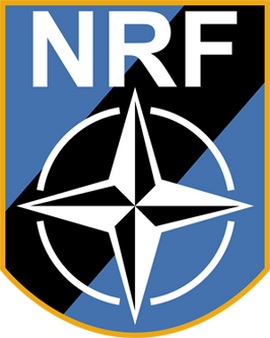
The arm of NATO
The NATO Response Force was created in 2003 as a high readiness force comprised of ground, naval and air forces as well as special forces capable of quick deployment. Currently, it has up to 40,000 troops. Contributions to the NATO Response Force rotate annually between the different countries, establishing a group of host nations which lead its establishment. Within its strucutre, a Very High Readiness Joint Task Force (VJTF) is incorporated, which is the spearhead formed by up to 5,000 soldiers, ready to be mobilised immediately and act as a potential deterrent before a crisis begins.
Strategic Evolution
|
1950s 1955. Warsaw Pact |
Purely defensive scope. The enemy is the Soviet Union and, against an attack from them, NATO would respond with a massive deployment of conventional forces. Later, it becomes a massive retaliation concept: an attack of any kind against the Alliance would trigger nuclear holocaust. |
|
1960s 1967. Harmel Report |
Flexible response: use the same means as the adversary. The Harmel report makes way for the political dimension of conflict resolution as well as crisis management, disarmament and detente. |
|
1990s 1989. Fall of the Berlin Wall |
The fall of the Iron Curtain and the end of the Cold War led NATO to give priority to political dialogue and cooperation with Eastern Europe, with programmes like 'Partner for Peace', which gave entry to friendly countries. In this way, the Alliance gained new members and expanded. |
|
21st Century 2001. 9/11 Attacks |
In the 21st century, the Alliance prepares to face new global challenges, such as terrorism, nuclear proliferation, or cyberattacks, and establishes itself as a global international player. |
Spain in NATO
Since its incorporation in 1982, Spain's role in NATO has continued to increase and today it is considered a serious and trustworthy member, showing its committment to the Alliance through its financial support (it is the seventh highest contributor), by making different means and capabilities available, and through its participation in operations which the organisation carries out.
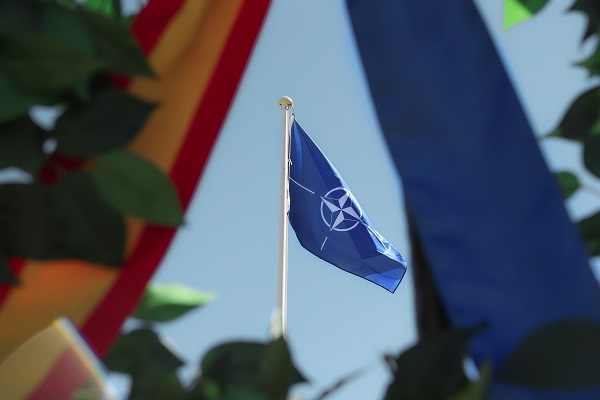
Incorporation
1981
The membership process begins.
1982
Spain becomes the 16th member of NATO, but with two limitations: its participation in the Alliance would not entail incorporation into the integrated military structure; and installing, storing or bringing nuclear weapons into Spain would remain prohibited.
1986
Referendum about remaining in NATO. The vote resulted in 52.54% of votes in favour of remaining in NATO. From then on, Spain began its participation in all of NATO's committees, work groups, agencies, budgets and defence planning, with the exception of the integrated military structure.
1999
Spain completes its full incorporation into NATO's integrated military structure.
Missions
Spain has contributed means and staff to NATO's most important missions and operations. Amongst others, it has contributed to the Implementation and Stablilisation mission in Bosnia-Herzegovina, the multinational Force in Kosovo, the 'Unified Protector' operation in Libya, the operation against piracy in the Gulf of Aden and the Horn of Africa, the Assistance and Security International Force in Afghanistan, and the 'Naval Active Endeavour' operation against terrorism in the Mediterranean.
In some of them, the principal support has come from the Army and, currently, the most important ongoing missions are:
TURKEY
The Army contibutes to 'Support for Turkey', protecting against the threat of ballistic missiles with the deployment of an anti-aircraft Patriot battery and more than 140 troops.
LATVIA
'Advanced Reinforced Presence' is comprised of more than 330 troops who form part of a multinational battalion led by Canada. The Army has deployed tanks and mechanised vehicles for the first time.
AFGHANISTAN
In 'Resolute Support', almost 100 Spaniards perform specific tasks with the Staff, advisory services and protection.
IRAQ
For this new NATO mission there will be some 70 soldiers working in positions in the headquarters, as instructors or advisors and in security components.
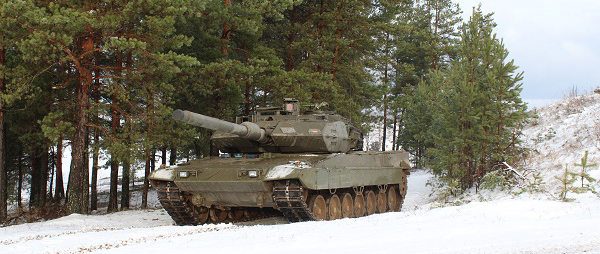
Prominent Spaniards in the NATO structure
Javier Solana Madariaga
From 1995 to 1999, the former Spanish minister of Foreign Affairs was chosen as the General Secretary of the Alliance, the ninth in NATO's history. He is the first, and so far the only, Spaniard who has held the position.
General Javier Cabeza Taberné
In 2012 General Javier Cabeza Taberné was the Deputy Commander of NATO's ISAF Joint Command (IJC) in Afghanistan (making him the second in the operational chain of command), the most important position to be held by a Spanish soldier during Spain's entire military participation (more than ten years) in Afghanistan. That same year another Spanish soldier, General José Luis Antolín García, was the IJC communication director.
Lieutenant General Fernando Alejandre Martínez
In 2015 he was second in command of NATO's Joint Force Command based in Brunssum (the Netherlands), until 2017 when he was named Defence Chief of Staff, a position which he holds today.
General Jaime Íñiguez Andrade
In 2018 he was the Spanish soldier with the highest ranking position in NATO's chain of command, holding the position of Chief of Special Operations Joint Command.
NATO in Spain
NATO Rapid Deployable Corps – Spanish Headquarters
The headquarters of the NATO Rapid Deployable Corps Spain (located in the 'Jaime I' base in Bétera, Valencia) is one of the nine deployable land headquarters which make up the Structure of NATO's Force.
It is the international part of the High Readiness Land Headquarters of the Army and represents Spain's principal committment to NATO.
Centre of Excellence against IEDs
It is one of the 19 Centres of Excellence which NATO has in operation. It is located in Hoyo de Manzanares (not to be confused with the Engineering Academy's International Centre for Clearance, which is part of the Army) and its mision is to provide experience and exercise its leadership in the fight against Improvised Explosive Devices.
'RETAMARES' DEACTIVATED
In 1999 it was created as NATO's Southwestern Subregional Command Headquarters; in 2004 it became the Land Component Command, and in 2013 it was deactivated after NATO's command structure was reformed in order to be more effective, more easily deployed, reduced and more streamlined with regards to its cost.
COAC, TORREJÓN DE ARDOZ (MADRID)
The Combined Aerial Operational Centre in Torrejón de Ardoz is one of two such centres with deployment capability, responsible for the aerial defence of the southern European region.
ROTA NAVAL BASE (CADIZ)
This base forms part of NATO's anti-missile defence system.
MORÓN AIR BASE (SEVILLE)
One of the bases for fighter planes which take part in the Baltic Aerial Police.
LOS LLANOS AERIAL BASE (ALBACTE)
Seat of the Tactical Leadership Programme for the crews of NATO's fighter planes.
First VJTF
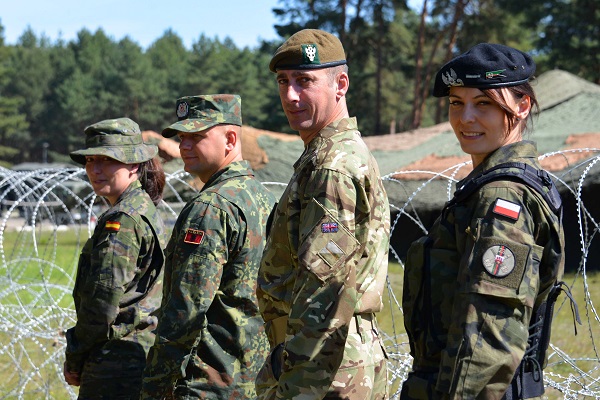
Spain was the framework nation to lead the first Very High Readiness Joint Task Force (VJTF) in 2016. The High Readiness Land Headquarters in Bétera was designated to lead the Land Component Command, and the 7th Galicia Brigade made up the majority of the force.
UNIDADES DEL EJÉRCITO
- Araba Álava |
- Albacete |
- Alicante |
- Almería |
- Asturias |
- Ávila |
- Badajoz |
- Barcelona |
- Burgos |
- Cáceres |
- Cádiz |
- Cantabria |
- Castellón |
- Ceuta |
- Ciudad Real |
- Córdoba |
- A Coruña |
- Cuenca |
- Girona |
- Granada |
- Guadalajara |
- Gipuzkoa |
- Huelva |
- Huesca |
- Islas Baleares |
- Jaén |
- León |
- Lleida |
- Lugo |
- Madrid |
- Málaga |
- Melilla |
- Murcia |
- Navarra |
- Ourense |
- Palencia |
- Las Palmas |
- Pontevedra |
- La Rioja |
- Salamanca |
- Segovia |
- Sevilla |
- Soria |
- Tarragona |
- Santa Cruz de Tenerife |
- Teruel |
- Toledo |
- Valencia |
- Valladolid |
- Bizkaia |
- Zamora |
- Zaragoza



